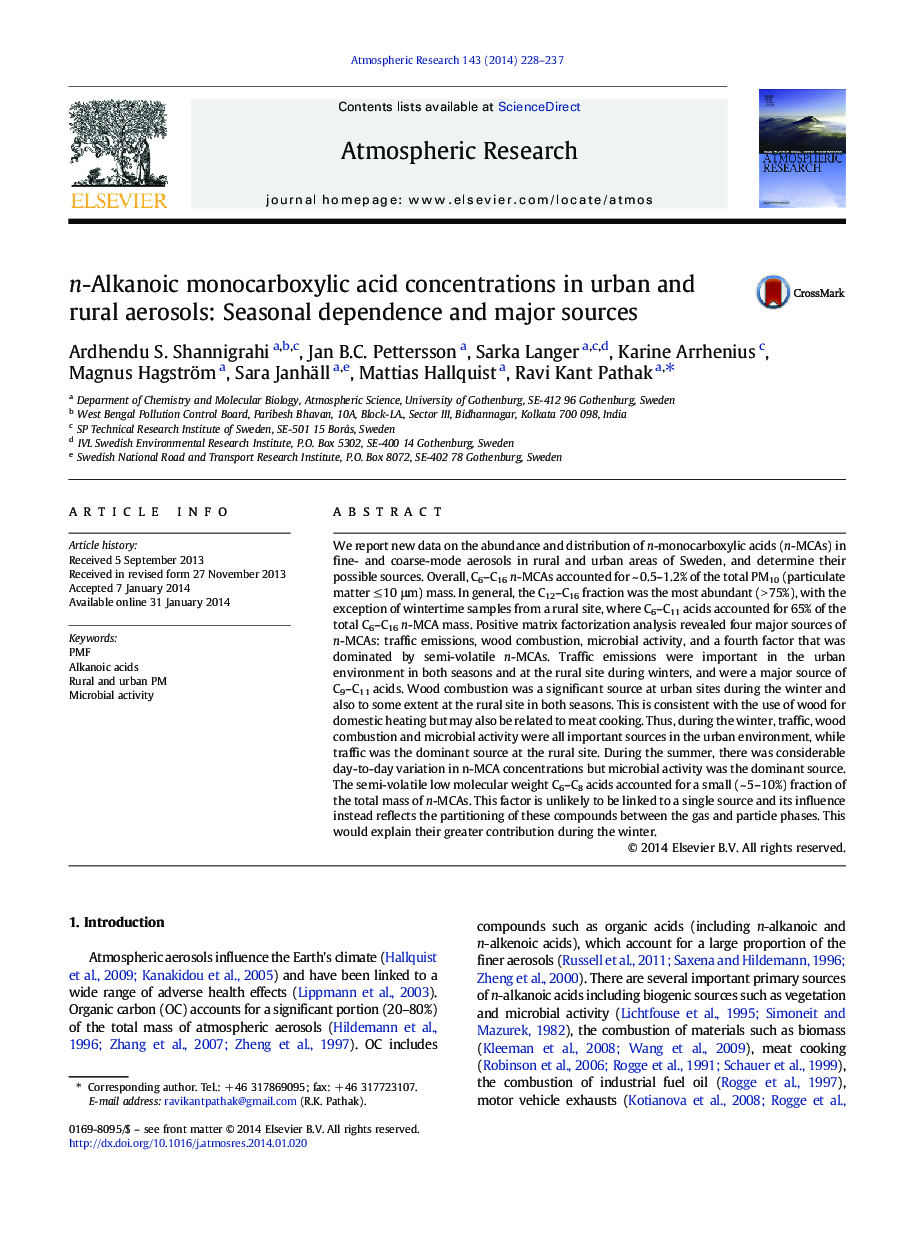| کد مقاله | کد نشریه | سال انتشار | مقاله انگلیسی | نسخه تمام متن |
|---|---|---|---|---|
| 4449905 | 1620528 | 2014 | 10 صفحه PDF | دانلود رایگان |

• New data and analysis of Alkanoic acid sources for rural and urban aerosols in Sweden
• Major sources identified: Traffic, Wood combustion, Microbial activity and Semi-volatiles.
• Traffic emissions and wood combustion processes were important during winters.
• Microbial activity was the dominant source during the summer season.
• C6–C8 acids (Semi-volatiles) were important in winters due to their partitioning to aerosol phase.
We report new data on the abundance and distribution of n-monocarboxylic acids (n-MCAs) in fine- and coarse-mode aerosols in rural and urban areas of Sweden, and determine their possible sources. Overall, C6–C16n-MCAs accounted for ~ 0.5–1.2% of the total PM10 (particulate matter ≤ 10 μm) mass. In general, the C12–C16 fraction was the most abundant (> 75%), with the exception of wintertime samples from a rural site, where C6–C11 acids accounted for 65% of the total C6–C16n-MCA mass. Positive matrix factorization analysis revealed four major sources of n-MCAs: traffic emissions, wood combustion, microbial activity, and a fourth factor that was dominated by semi-volatile n-MCAs. Traffic emissions were important in the urban environment in both seasons and at the rural site during winters, and were a major source of C9–C11 acids. Wood combustion was a significant source at urban sites during the winter and also to some extent at the rural site in both seasons. This is consistent with the use of wood for domestic heating but may also be related to meat cooking. Thus, during the winter, traffic, wood combustion and microbial activity were all important sources in the urban environment, while traffic was the dominant source at the rural site. During the summer, there was considerable day-to-day variation in n-MCA concentrations but microbial activity was the dominant source. The semi-volatile low molecular weight C6–C8 acids accounted for a small (~ 5–10%) fraction of the total mass of n-MCAs. This factor is unlikely to be linked to a single source and its influence instead reflects the partitioning of these compounds between the gas and particle phases. This would explain their greater contribution during the winter.
Journal: Atmospheric Research - Volume 143, 15 June 2014, Pages 228–237